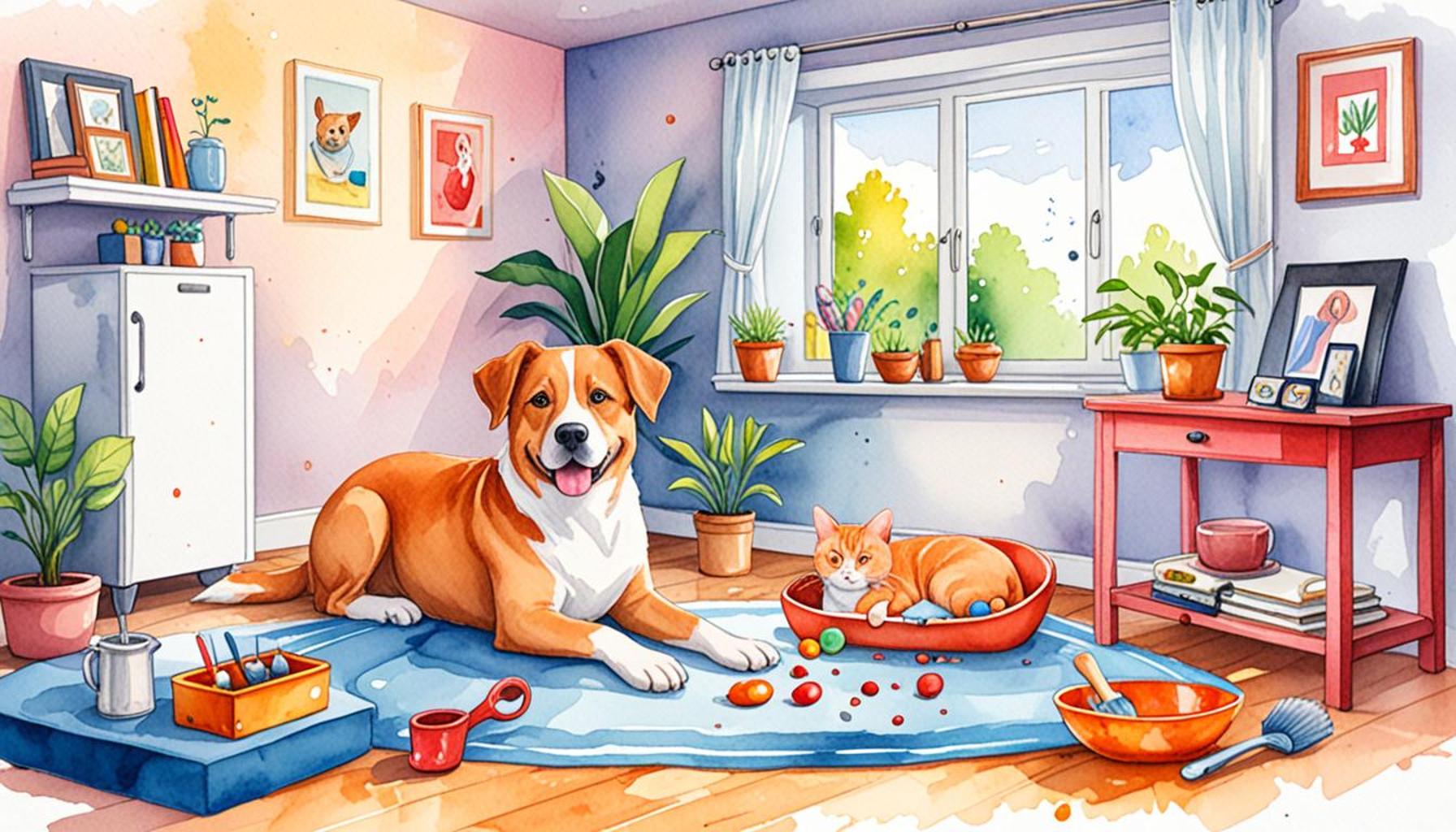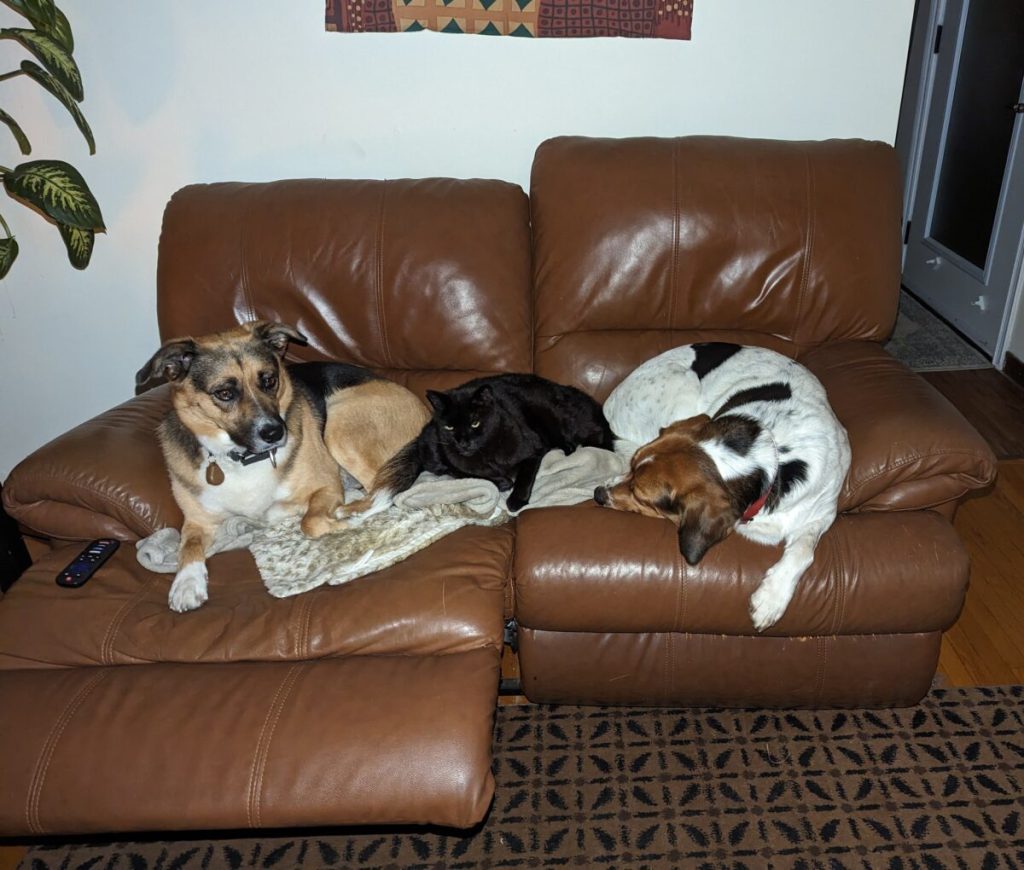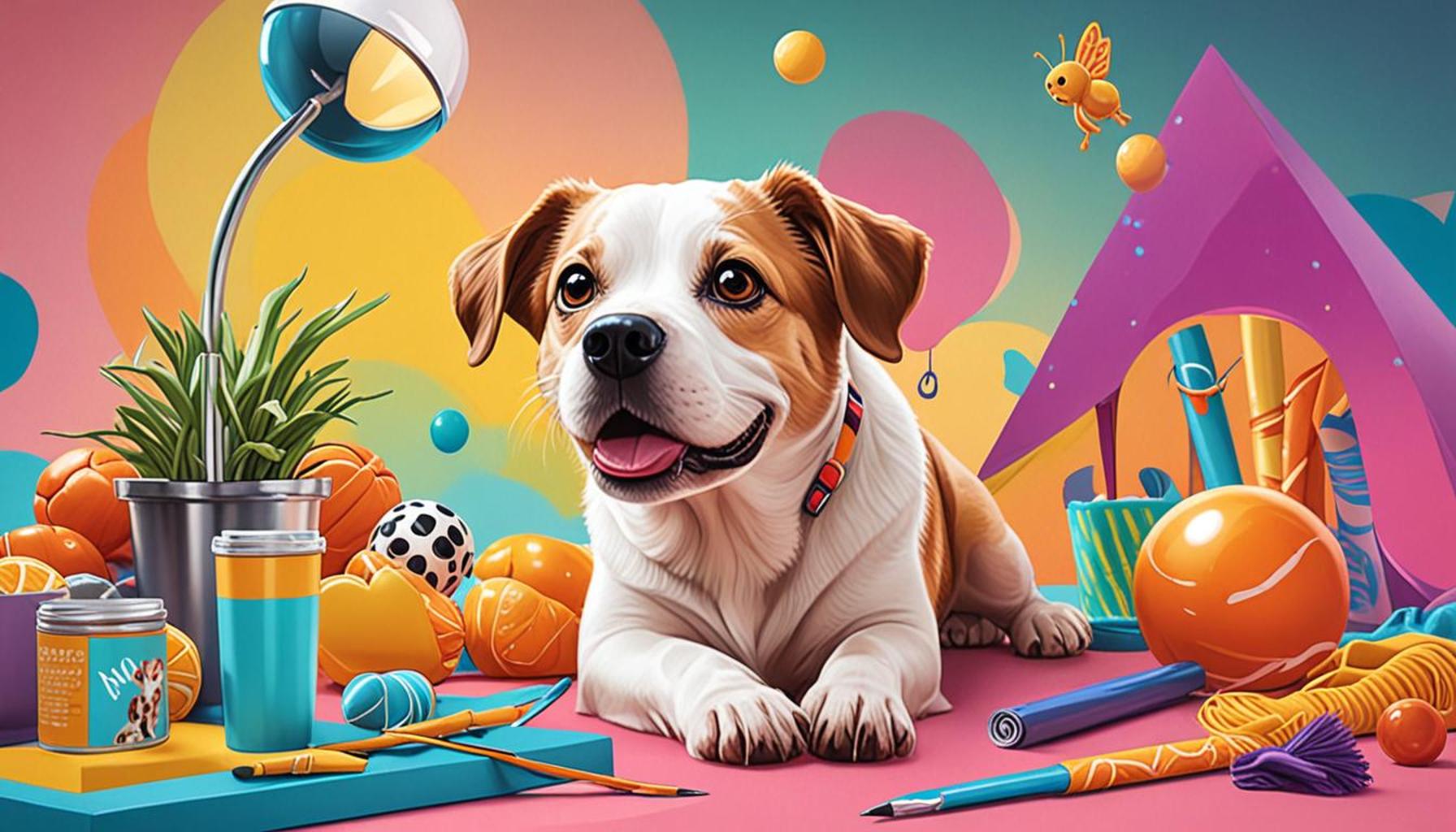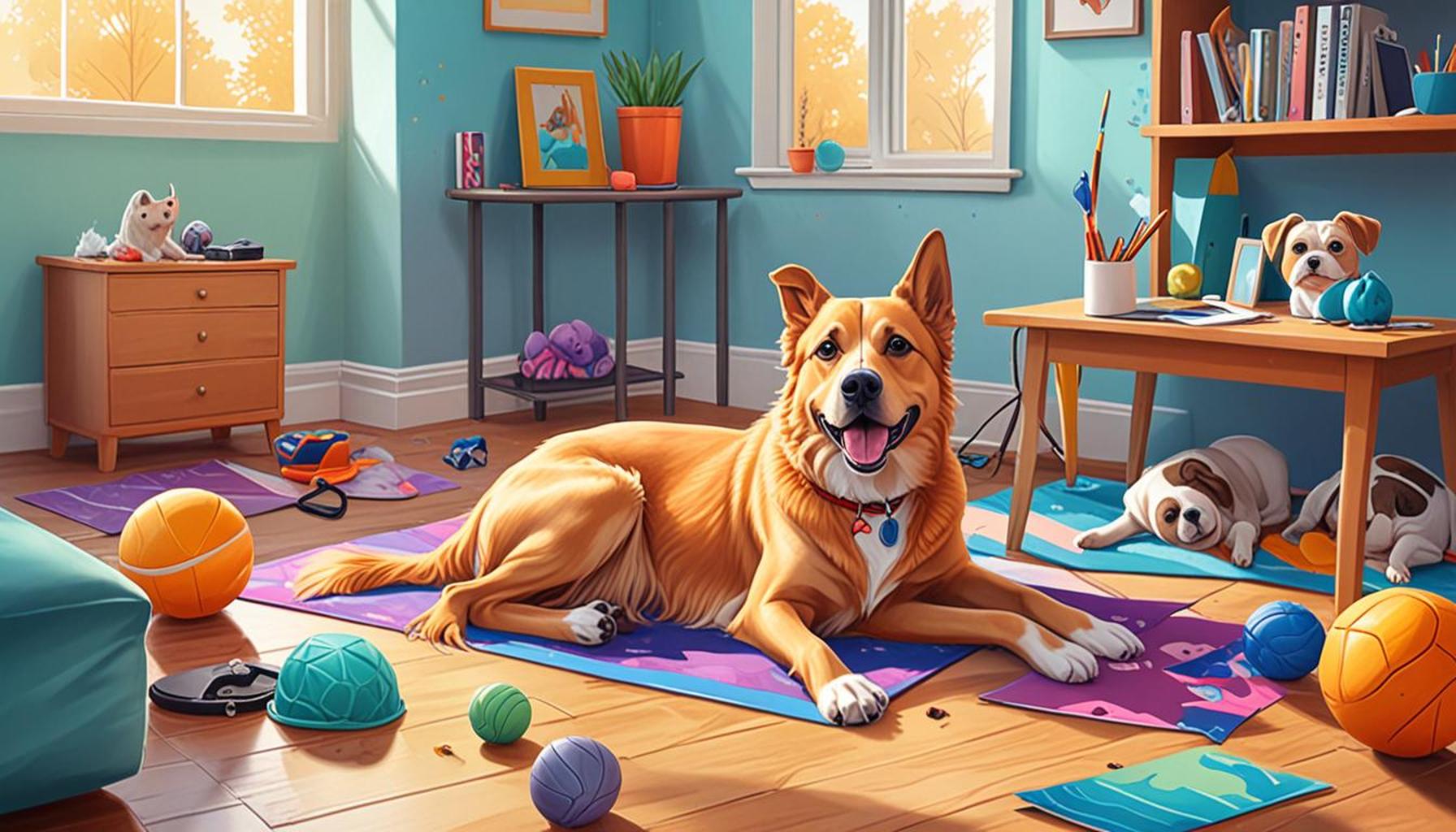How to Create a Safe and Comfortable Environment for Your Pet at Home

Creating a Haven for Your Pet
Providing a comfortable and safe environment for your beloved pet is not merely a matter of convenience; it is a fundamental responsibility of pet ownership. To ensure a haven that promotes their well-being, consider several critical aspects that contribute to your pet’s happiness and security.
- Assessing Your Space: Begin by performing a thorough evaluation of your home. Identify potential hazards that could endanger your pet’s safety. Common threats include toxic plants like poinsettias and aloe vera, which can cause illness if ingested. Additionally, small objects such as coins, batteries, or rubber bands can pose choking hazards. Furthermore, be vigilant about checking for loose electrical cords and ensure that cleaning products are stored out of reach to minimize risks related to poisoning.
- Comfortable Zones: Establish designated areas within your space where your pets can unwind and feel secure. Create cozy retreats by placing comfortable beds, soft blankets, and engaging toys in quiet corners. For example, consider using a covered dog bed or a cat tree with multiple levels, which can create a sense of ownership and hierarchy for your pet. Personalizing these spaces according to your pet’s preferences will not only enhance their comfort, but it may also promote their overall mental well-being.
- Temperature Control: It’s crucial to maintain a suitable temperature throughout your home, as pets can be more sensitive to weather extremes than humans. Ensure that they have access to shaded areas and water during hot summer days, while providing warmth in the winter months. For instance, using pet-safe heating pads or setting up a cozy reading nook near a heater can significantly improve their comfort levels.
Each home presents unique challenges and opportunities for pet safety and comfort. In the diverse environments of the United States, adaptations are necessary. For example, homes with expansive yards might benefit from secure fencing to prevent escapes, while urban apartments could utilize pet gates to keep animals safe in a designated area. Furthermore, secure window screens are vital to keeping adventurous pets indoors and preventing unfortunate accidents.
It’s equally important to comprehend your pet’s individual needs and behavioral tendencies. For instance, while dogs often enjoy snug spaces where they can curl up, cats tend to appreciate high perches where they can observe their surroundings. By tailoring their environment to respect these preferences, you foster not just a comfortable habitat, but a space that caters to their instincts.
By thoughtfully integrating both safety and comfort into your home, you enhance the quality of life for your furry companions while deepening the emotional connection between you and your pet. Implementing these adjustments doesn’t require a hefty investment; often, simple changes can have profound impacts. The next sections will explore practical measures, such as budget-friendly DIY modifications and innovative products designed to make your home a true sanctuary for pets.
LEARN MORE: Click here to discover the signs of stress and anxiety in your pets

Ensuring Safety Through Thoughtful Design
When it comes to creating a safe and comfortable environment for your pet at home, meticulous planning is key. This process begins with understanding the specific needs of your pet while incorporating safety measures that can prevent accidents. Given that pets often explore their surroundings with curiosity, being proactive about potential risks is essential.
Pet-Proofing Your Home: The first step in ensuring an environment conducive to your pet’s safety is to effectively pet-proof your home. This includes more than just hiding away hazardous objects; it also involves a deep dive into your surroundings. Here are several key areas to focus on when pet-proofing:
- Kitchen Safety: This room can be a treasure trove of dangers, from toxic food items to sharp utensils. Ensure that all food products, such as chocolate, grapes, and onions, are stored securely. Using child-proof locks on cabinets can deter pets from sneaking into potentially harmful substances.
- Bathroom Precautions: The bathroom is another critical area to monitor. Keep cleaning supplies, medications, and personal care products out of reach. Items like cotton swabs and dental floss can be particularly dangerous if ingested. Closing toilet lids and keeping them shut can also prevent accidents.
- Living Areas: In shared spaces, be conscious of small decor items that could be easily knocked over. Opt for non-slip rugs and secure heavy furniture to prevent tipping. Additionally, keep plants out of reach, particularly those that are known to be toxic to pets, such as lilies and ferns.
Next, consider how your pet interacts with their environment. Whether you own a dog, cat, or any other animal, their distinct behaviors must inform how you set up their surroundings. For instance, dogs usually require ample space for movement and playing, while cats thrive on vertical spaces, such as shelves or cat trees. Create a natural flow for both types by ensuring they have designated areas for activity and relaxation.
Furnishing with Care: The furniture and decor you choose can drastically impact your pet’s comfort. When selecting materials, look for items that are durable and easy to clean, considering that accidents are a natural aspect of pet ownership. Fabrics that resist stains and scratches are ideal, and opting for furniture with rounded edges can reduce the risk of injury. Additionally, providing multiple cozy spots throughout your home where your pet can curl up—like soft cushions, pet beds, or even heated pads—will encourage them to settle in and feel at peace.
Moreover, maintain an organized space by using storage bins or baskets for toys and supplies, which not only keeps clutter at bay but also helps reduce the risk of pet-related accidents. This organization will contribute to a more harmonious environment, benefiting both you and your furry friend.
By considering these factors and integrating safety measures into your home design, you are laying the foundation for a secure and welcoming environment. Taking these steps not only protects your pet but also enhances their quality of life, fostering a deep, trusting bond between you and them.
Creating a Safe Environment for Your Pet
Providing a safe and comfortable environment for your pet at home is paramount to their well-being. This involves evaluating your living space and making necessary adjustments to ensure it is both safe and inviting. One of the first steps is to identify potential hazards such as toxic plants, small objects that could be ingested, and accessible electrical cords. Keeping harmful substances, like cleaning supplies and medications, out of reach will significantly reduce the risk of accidents.
Additionally, consider investing in pet-proof furniture. Items that are sturdy and easy to clean can withstand the wear and tear of daily pet activities. Soft, hypoallergenic materials help in creating a comfortable resting space while also ensuring they are safe from allergens.
Another critical aspect is the environment’s temperature and ventilation. Make sure that your home is equipped with appropriate heating or cooling systems to maintain a comfortable atmosphere during different seasons. Ensuring that pets have a cozy, quiet corner with their bed and toys will contribute to their overall comfort.
Comfort Features for Your Pet
After addressing safety, you can shift your focus toward enhancing comfort. Providing a designated sleeping area with a comfortable bed will give your pet their own space to relax. Consider using calming scents, like lavender, which can help soothe anxious pets. The right lighting also contributes to the comfort of your pets; natural light can elevate mood, while dimmer lights can create a relaxing ambiance in the evening.
Creating a designated play area inside your home is another way to elevate your pet’s comfort. This space can include toys that stimulate mental and physical exercise while ensuring that they are soft and safe for your pet. Regularly rotating toys can keep them engaged and prevent boredom.
Using the right materials in your pet’s living space not only enhances their comfort but also adds to the aesthetics of your home. From cozy blankets to stylish pet houses, the choices you make can contribute to a harmonious living environment for both you and your pet.
| Category | Advantages |
|---|---|
| Safety Measures | Protects against potential hazards like toxic substances and sharp objects. |
| Comfort Features | Enhances overall well-being with cozy resting spaces and engaging play areas. |
Remember, all pets are unique, and understanding their specific needs is crucial for creating the most effective environment. By staying observant and ensuring that both safety and comfort are at the forefront, you can greatly improve your pet’s quality of life in your home.
LEARN MORE: Click here to dive deeper
Creating Comfort with Thoughtful Amenities
While safety is the principal concern, creating a vibrant and comfortable environment for your pet involves enhancing their living conditions with thoughtful amenities. By focusing on aspects that cater specifically to their needs and preferences, you can build a sanctuary that promotes well-being and happiness for your furry friends.
Temperature and Ventilation: One critical aspect of a comfortable pet environment is managing temperature and ventilation. Different pets have varying tolerances to heat and cold, so it’s vital to control their environment effectively. Ensure that areas your pet spends time in have adequate air circulation and are well-ventilated. Consider investing in air purifiers to reduce allergens that could irritate your pet, especially for those with respiratory issues. In hot summer months, providing cool, shaded areas in your yard becomes essential, and using fans or air conditioning indoors can keep pets comfortable when temperatures rise.
Creating Enrichment Opportunities: A stimulating environment is crucial for mental and physical health. Incorporate a range of toys and interactive elements that encourage play and exploration. Rotating toys periodically can help keep boredom at bay. Additionally, consider installing scratching posts for cats or agility equipment for dogs. These elements not only provide entertainment but also promote physical activity and mental engagement, vital components in your pet’s overall well-being.
Designated Spaces: Establish specific areas for your pet that reflect their personality and comfort preferences. For example, dogs may prefer a cozy nook away from foot traffic, while cats often enjoy high places for safety and observation. Create spaces such as a sun-warmed spot by a window or a quiet corner with blankets. The key is to ensure that these allocated spaces are free from disturbances, allowing your pet to retreat and relax whenever they desire. Incorporate familiar items like their favorite blanket or a toy to make these spaces inviting.
Weather Considerations: For pet owners with outdoor spaces, it’s paramount to provide appropriate shelter and comfort, reflecting the outdoor climate. In winter, ensure that outdoor pets have insulated shelters to protect them from harsh winds and cold temperatures. During the summer, providing shaded areas along with fresh water can help prevent overheating. Furthermore, pet ramps can be a great addition to ease the entry and exit for older pets or those with mobility issues, reinforcing their comfort in transitioning between interior and exterior spaces.
Social Interaction and Mental Health: Socialization plays a crucial role in the mental well-being of your pet. Make a special effort to spend quality time with your pet, engaging in activities that foster bonding and trust. Regular interactions not only enhance your pet’s comfort but can significantly improve their mood and reduce anxiety levels. For pets left alone for extended periods, consider employing pet cameras or interactive treat dispensers that allow remote engagement, ensuring that they feel connected even when you’re not at home.
Overall, by incorporating these amenities and considerations into your pet’s living environment, you pave the way for a happier, healthier life. Each thoughtful adjustment reflects your commitment to their well-being, deepening the relationship you share with your beloved companion.
DISCOVER MORE: Click here to learn about the significance of play in your puppy’s development
Conclusion: Elevating Your Pet’s Home Environment
Creating a safe and comfortable environment for your pet at home is not merely a checklist of necessities; it’s a heartfelt commitment to their well-being and happiness. By focusing on key aspects such as temperature control, mental stimulation, and designated spaces, you can transform your living space into a true sanctuary for your furry friends. Remember, every pet is unique, with individual needs and preferences that must be honored for their utmost comfort.
Incorporating thoughtful amenities, from cozy hideaways to engaging toys, fosters not only physical safety but also mental enrichment. Adequate ventilation, climate control, and outdoor shelter provide the biological necessities that keep your pet thriving, whether they’re basking in the sun or snuggled up in a warm corner on a chilly day. Additionally, prioritizing social interaction enhances their emotional health, reinforcing a bond built on trust and affection.
As you put these principles into practice, consider the ongoing journey of discovery alongside your pet. Pay attention to their reactions and adjust as needed, ensuring their environment remains a reflection of their evolving needs. By adopting a proactive approach to pet care, you not only improve their quality of life but also deepen the precious relationship you share. In essence, your home becomes a haven—nurturing, safe, and filled with love—that your pet will thrive in for years to come.


